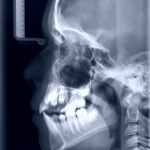
Anterior open-bite (AOB) is considered to be a challenging malocclusion to treat. The aim of this review was to assess the scientific literature and compile the current state of the evidence for stability of surgical and nonsurgical therapies for AOB malocclusion.
Medline, Embase and the Cochrane Library were searched for studies in humans where the outcome was assessed at the ≥ 1 year post-treatment, negative overbite (OB) or open-bite pre-intervention was defined by vertical measures, and corrective therapy for open-bite malocclusion adequately described. The journals American Journal of Orthodontics and Dentofacial Orthopedics and Angle Orthodontist were handsearched as were reference lists of included studies. Studies accepted for analysis were reviewed and their relevant data retrieved for pooling. The long-term stability estimates were pooled into nonsurgical and surgical groups, and summary statistics were generated. Random-effects statistical models were used to pool the mean OB measures before and after treatment and also at the long-term follow-up.
Of the 105 abstract identified 21 articles were included in final analyses. All studies were case series. The surgical treatment group (SX) had a mean age of 23.3 years, the non-surgical group(NSX) a mean age of 16.4 years.
They found that:-
- The pre-treatment adjusted means of OB were -2.8 mm for the SX and -2.5 mm for the NSX. AOB closures up to +1.6 mm (SX) and +1.4 mm (NSX) were achieved.
- Relapse in the SX group during the mean 3.5 years of follow-up reduced the OB to +1.3 mm;
- The NSX group relapsed to +0.8 mm in the mean 3.2 years of follow-up.
- Pooled results indicated reasonable stability of both the SX (82%) and NSX (75%) treatments of AOB measured by positive OB at 12 or more months after the treatment interventions.
They concluded:-
In the included case series publications, success of both the SX and NSX treatments of AOB appeared to be greater than 75%. Because the SX and the NSX were examined in different studies and applied to different clinical populations, no direct assessment of comparative effectiveness was possible. The pooled results should be viewed with caution because of the lack of within-study control groups and the variability among studies.
Greenlee GM, Huang GJ, Chen SS, Chen J, Koepsell T, Hujoel P. Stability of treatment for anterior open-bite malocclusion: a meta-analysis. Am J Orthod Dentofacial Orthop. 2011 Feb;139(2):154-69. Review. PubMed PMID: 21300243.

[…] Dental Elf – 23rd Aug 2011 – How stable is treatment for anterior open bite? […]